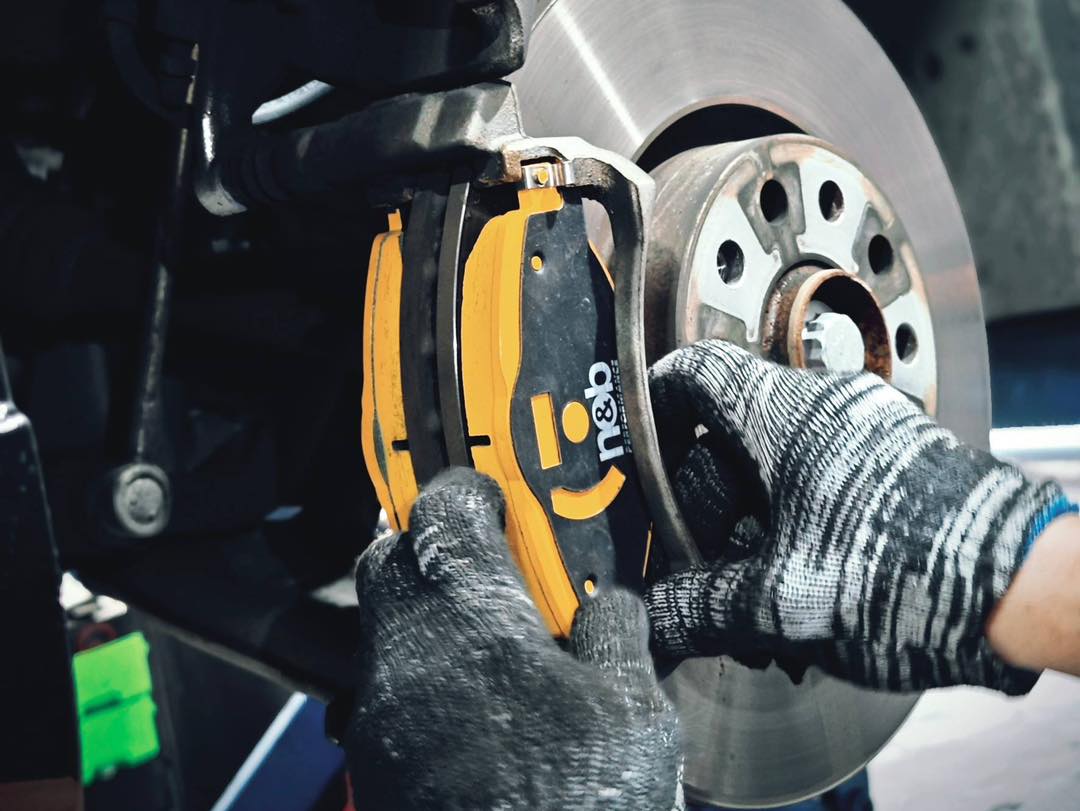
Brake Pads Installation and Bed-In Advice
First of all
Choose the right type of brake pads based on your usage habits. (Incorrect example: Choosing street type pads for aggressive mountain driving.)
Installation Notes
- Before installation, please make sure the brake disc is flat. An uneven disc not only prevents new brake pads from achieving full performance (due to the lack of 100% surface contact), but it is also a major cause of brake squeal and abnormalities (e.g., uneven wear, damage, or delamination)
- New discs or resurfaced discs may have oil, dust, and dirt on the surface. Clean the discs before installing new brake pads to avoid noise, slippage (due to friction material is contaminated with oil), etc.
- Before installation, please check whether the brake caliper operates normally, whether the dust has been cleaned, whether the sliding pin is rusty or insufficient lubrication. Cracked piston dust boots or too much dust, which may also cause noise and issues. (For example, uneven wear, wear out too fast, damage, or separation)
- Using brake grease properly can help prevent caliper misalignment, noise, and vibration.
Bed-In Procedure
A weaker braking force after installing a set of new brake pads is very normal phenomenon. To maximize the performance of brake pads and discs, it is essential that they are BEDDED-IN properly.
Perform 5 to 10 slow-downs applying moderate pressure from approximately 60 km/h to 10 km/h WITHOUT coming to a complete stop.
Make an additional 3 slow-downs, applying moderate pressure from approximately 100 km/h to 60 km/h. Then with heavy pressure, perform 3 slow-downs from approximately 100 km/h to 10 km/h WITHOUT coming to a complete stop.
DO NOT DRAG BRAKES OR ENGAGE ABS.
Allow at least 15 minutes for brake system to cool down. After above steps your brake pads are ready for normal use.
Please be aware that the full bed-in process can take up to 300–1,000 km, and for slower bed-in, it may extend to 2,000–3,000 km depending on user driving style and conditions. Non-asbestos organic (NAO) formulas require a longer bed-in time due to their lower abrasiveness on the discs.
During the bed-in period, new pads are normally abrasive that can cause noise. It will go away or minimized after full bed-in process.
Braking too hard during the bed-in period will cause the temperature of the disc to rise sharply, which will cause the material of the new pads and the new / machined rotors to deteriorate due to drastic temperature changes, resulting in poor braking, and even noise and slippage.
For track compound, before initial hard track use, street driving for 200-300 kms+ or several warmup laps applying gentle brake pressure is recommended.
Please find local dealer or professional mechanic if you need any further assistance.